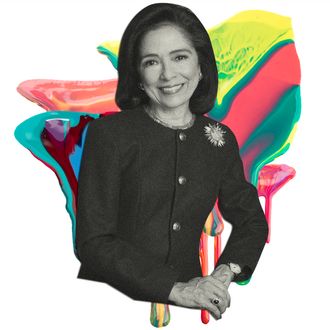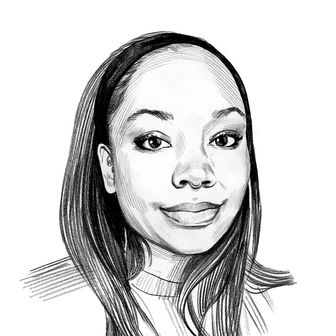
Fashion Institute of Technology president Dr. Joyce Brown has dedicated her career to working in higher public education. She held a number of senior administrative posts at the City University of New York before arriving at FIT in 1998, including acting president of Bernard Baruch College and vice-chancellor of the university. In addition, she was professor of clinical psychology at the Graduate School and University Center of CUNY, where she is currently professor emerita. Dr. Brown also served as New York City deputy mayor for public and community affairs during the 1993–1994 Dinkins administration.
Every day is different — Dr. Brown compares running FIT to running a little city where no one sleeps. And when it comes to education, you’re always working within a changing landscape. Right now, headed into the new school year, the focus is on sustainability, biodesign, and inclusion. The school’s latest endeavor, the Social Justice Center, was born out of a larger conversation about the lack of diversity in the fashion industry. The center aims to foster upcoming talent and prepare them for opportunities while also helping those already in the industry thrive with scholarships, mentorships, and apprenticeships.
Dr. Brown may be president of a New York City institution, but she she takes time to get away from the city and go upstate to garden and read when she can. She lives in New York City with her husband, H. Carl McCall. Here’s how she gets it done.
On her morning routine:
Generally, I try not to have to be up and going before seven. I’m not a breakfast person. I’m a tea drinker. I make tea and I start with emails and see what happened during the night, because something always does. We’re all talking via email before we get into the office.
On launching the Social Justice Center:
There are some cross-cutting issues that we always try to incorporate into the life of the college and the life experience of the students. Those cross-cutting issues have to do with sustainability, innovation, diversity, equity, and inclusion. When 2020 happened in the world, it happened here as well. It became clear that this was the moment that we really needed to focus on, trying to make a difference. We sit at the intersection of education and industry. We fuel the ranks of the creative industries in New York especially, but beyond the borders of New York too.
Much of what people were talking about had to do with the lack of diversity, the lack of opportunity for people of color in those industries. The murder of George Floyd raised the consciousness of people all over the world. The conversation changed, and it seemed to me that the thing we could best do is address those things at our doorstep where we were sending our students. We were training and educating all of these talented young people, and yet when you looked at the executive ranks of these industries, there was not a place for them. So we got to work and we went to our partners in the industry and because the conversation and the consciousness had been raised, people were much more open to the dialogue. I was really encouraged by the kind of support that we got from many of our industry partners.
I really do think we are in a position to make a tremendous difference. There’s nothing quite like the transformative power of education. It puts people on an equal footing and it will open doors that these young people would not normally have had the opportunity to even know about.
On how the job has changed over the years:
I’ve been here 24 years now. A lot of things have changed. One is the huge impact of technology on education. Every interaction that we have has been impacted by technology in the world: how you get information, teach, learn, entertain, communicate — it’s all different. And we’re always living in anticipation of the next step. We don’t educate for today, we educate for tomorrow and what will come and how these young, educated, innovative young people will go out and change the world. All of those things were happening at a pace that was reflective as well as advancing and then the pandemic struck. Everyone got thrown into the deep end of the pool. Teaching had to go completely remote, and research, all kinds of things that one is used to doing with the networking and the tactileness, all closed down. I think the pandemic really accelerated the changes that technology allowed. The possibilities that we have as a result of those new and different frontiers changes the aspiration level, changes the expectation, changes the conversation within our community, about what’s possible. That’s very exciting.
On measuring success:
I really thought that my best contribution could probably be made if I were running an institution, and was the one making the decisions about the allocation of limited resources to have the greatest impact on the lives of young people trying to get their chance to have a successful life. I’ve always stayed within public higher ed for that reason. My goal was to be able to run an institution, and I’ve been doing that. I’ve never thought about it as having this epiphany that I’ve “made it.” I think you’re always striving to do more and to move those goalposts out a little further each time. But that was a goal, and I feel like I’ve made a contribution in doing that job.
On dealing with criticism:
You’re always going to get pushback, sometimes from the strangest places. It’s not like everybody is out to help you be successful. I don’t take no for an answer very well. I just try and figure out another route, another approach if I believe it is the right thing to do, if I believe it’s for the greater good. Particularly what happens is you find people along the way who say no to you, but they don’t have the authority to say yes. Don’t let those people stop you, because it’s easy for someone to say no, it’s much more difficult to convince the people who really do have the authority to say yes. How I deal with that: I keep pushing.





